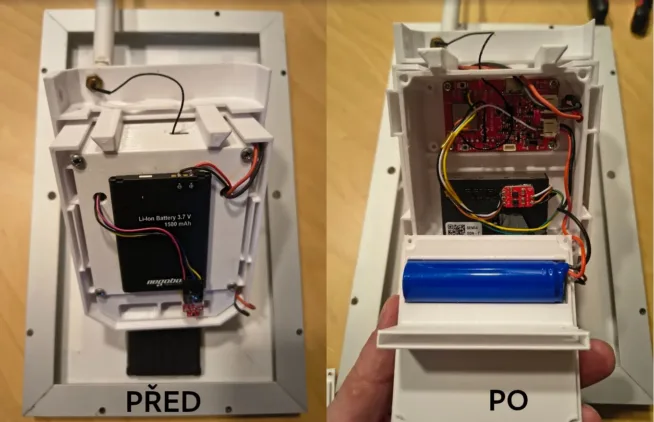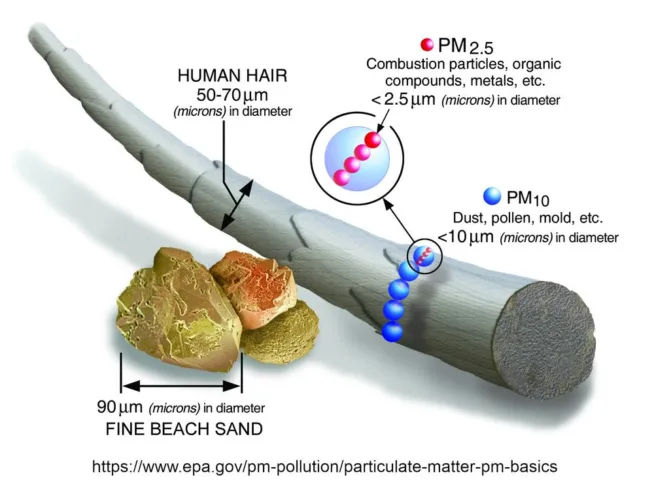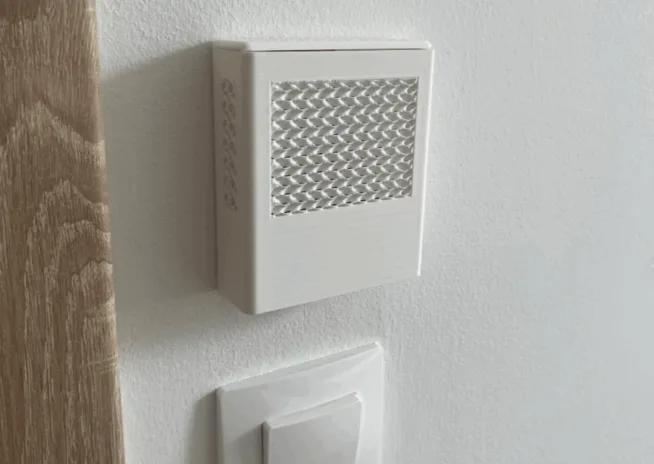
The 3D printed box, which you can easily overlook on the wall, is filled with various sensors for measuring air quality. Inside this inconspicuous box, there are sensors that measure temperature, humidity, CO2 concentration, and it also includes VOC and NOx air quality index data.
Ondřej shared on Twitter/X his project for measuring air quality using three sensors and the Meteo Mini control board. He publicly shared the 3D model of the printed box as well as the code for the Meteo Mini control board with ESP32-C3 for use.
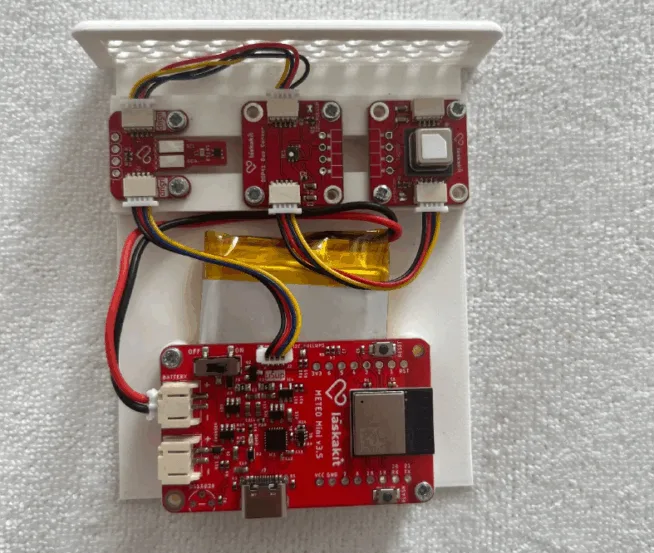
Hardware – control board and used sensors
This 3D printed box measures air quality thanks to three sensors – SHT40, SCD41, and SGP41.
– The module with the SHT40 sensor takes care of monitoring temperature and humidity.
– The module with the SCD41 measures the concentration of CO2 in the air and can also measure temperature.
– The last connected module is the SGP41, which monitors the VOC and NOx air index.
What the various indices (NOX, tVOC, etc.) of air quality mean I elaborated on here.
The control board Meteo Mini with Bluetooth and Wi-Fi chip ESP32-C3 is powered by a connected LiPo battery. The battery is charged via a USB-C cable, which you connect to a charger (power bank) from time to time to recharge the connected battery.
Additionally, the Meteo Mini has an input for connecting a solar panel, so if you want to use the Meteo Mini for measuring anything outdoors, you can continuously recharge the connected battery with a solar panel. Charging will also work through a water generator or a wind turbine.
Tip from chiptron.cz The input voltage from the solar panel is max 8V, keep in mind that the solar panel has a higher voltage than the nominal in cases where no or only a small current is drawn from the solar panel (the so-called open-circuit voltage, which must not exceed the mentioned 8V).
Service TMEP.eu
The code that Ondřej released for public use communicates with the sensors, measures air quality parameters inside the room, and sends the data to the popular service TMEP.eu, which takes care of storing data from the sensors and visualizing it for users. The service also allows integration with mobile phones through the TMEP app on both Android and iOS devices. There is also a widget for desktop and portable computers running Windows OS.
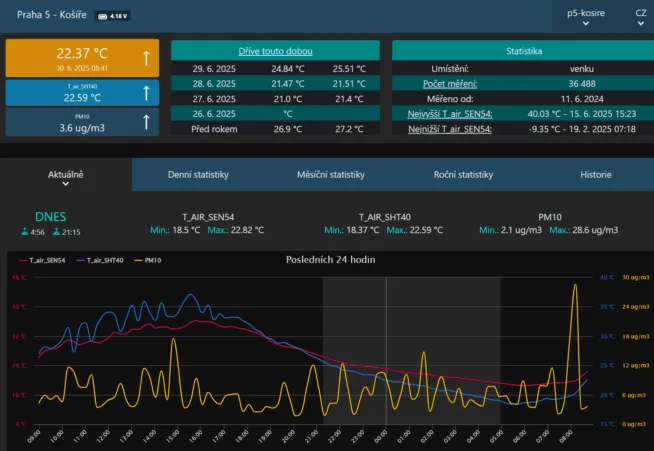
Energy consumption
The total energy consumption of the entire project is very low (in the units of uA) because Ondřej utilizes the very energy-efficient operation of the ESP32-C3, where, apart from the measurement and data transmission times, the control chip ESP32-C3 goes to sleep and also turns off the power to the sensors. Thus, apart from the measurement time, they do not draw any energy from the connected battery. The Meteo Mini board, on which the ESP32-C3 is placed, is designed with the goal of minimizing its own consumption.
Source code and 3D printed box model
You can find the model of the 3D printed box on printables.com
For the 3D printed box, you will need screws 2.2x8mm.
The code for the ESP32-C3 on the Meteo Mini board can be found on github.com
Done ✅@laska_kit meteomini➕SGP41 ➕SGP41➕SHT40
— Ondřej Kabelka 🏎️🚲⚜️ (@OndrejKabelka) June 28, 2025
All on @TMEPCZ pic.twitter.com/XMp59jE8bD


